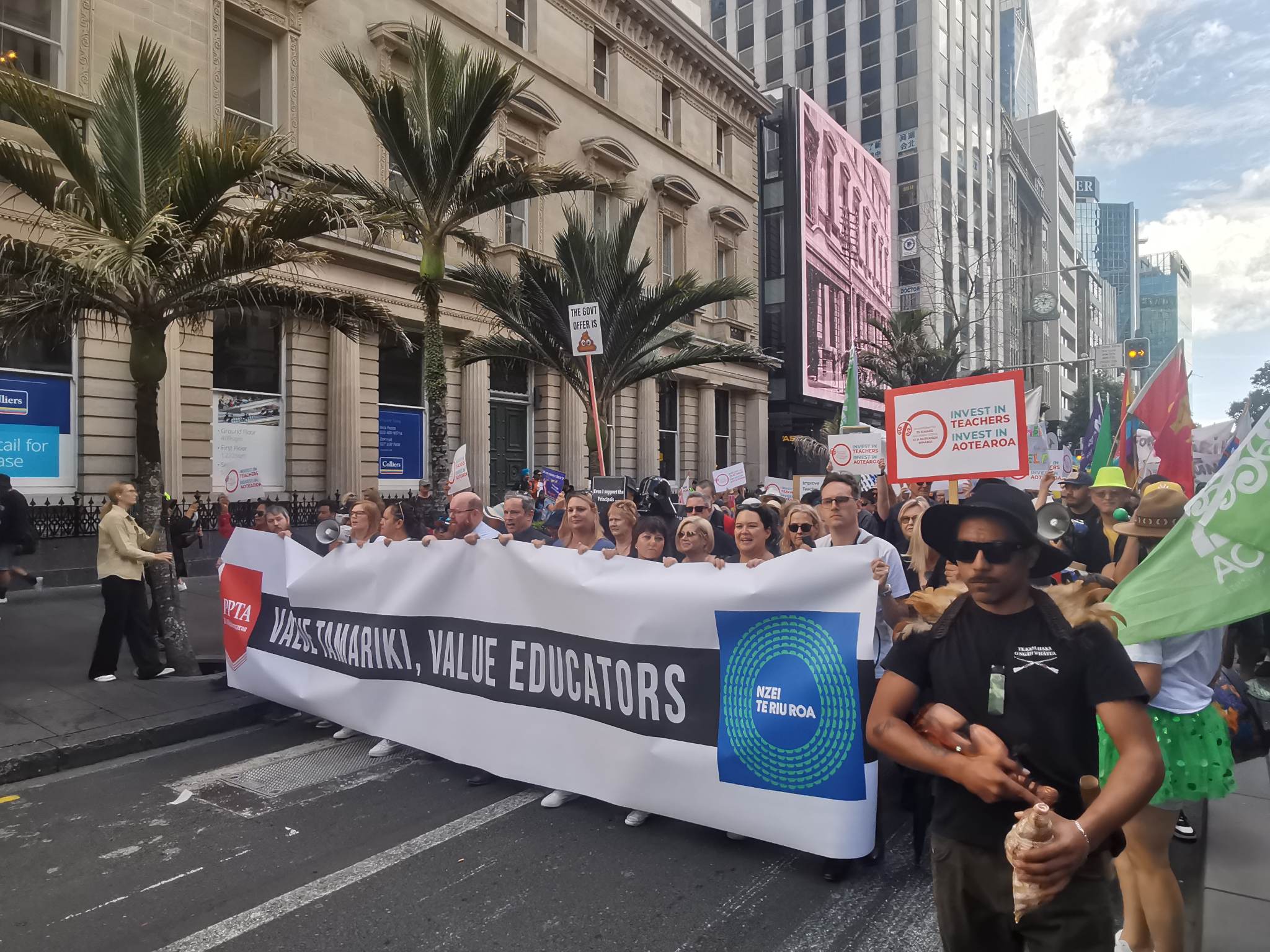
In Tāmaki Makaurau Auckland, an estimated 9000 teachers rallied on Fort Street at 10am, marching up Queen Street from 11am and finishing in Albert Park.
In Pōneke Wellington, motorists were advised to avoid the central city between the train station and Parliament, as protests were scheduled around midday. Organisers expected around 1500 people from the wider Wellington area.
Read the Term 1 edition of School News HERE.
In Tauranga, nearly 2000 teachers and supporters gathered to protest in locations around the city, including Tauranga Racecourse, Fraser St and Domain Rd in Pāpāmoa.
Other strike locations included Stratford, Timaru and Christchurch.
Schools and kindergartens around the country closed last Thursday as teachers demonstrated their frustration.
The strike follows months of slow negotiations between NZEI Te Riu Roa, the PPTA and the Ministry of Education for new collective agreements covering secondary, primary and area school teachers, and primary and area school principals. These negotiations continued this week, with further strike action possible for next week.
Education ministry Jan Tinetti says the Ministry of Education is focused on finding a solution to the situation quickly. On TVNZ’s Breakfast the day of the strikes, she said “We know that conditions are tough at the moment… I’ve stood where they’re standing today, in the past.
“It’s more than just renumeration.”
School News was at the Tāmaki demonstration that morning to learn more about teachers’ needs.
Tatjana Jacobi, acting HOD Social Science at Mt Roskill Grammar, described her job as “24/7,” and spoke about the increased pastoral care that has been expected of teachers in the past few years.
“Especially since COVID, the workloads have tripled,” said Jacobi. She cited increasing classroom sizes and the stressors of curriculum changes.
Another teacher noted that she had been in the job for three years, yet was being paid minimum wage and forced to work overtime without pay to keep up. She noted these conditions were also detrimental to her students, as she wasn’t able to give them the individual attention they deserved.
Sav, a secondary teacher in South Auckland agreed, noting “us teachers deserve better but more importantly our students deserve better, and when you look after teachers you look after students.”
Teachers also spoke of the need for increased support staff, and a desire to decrease reporting requirements.
“There’s a lot of demands for reports, for results, for self-reviews, for this and that. We’re the ones doing the mahi in front of the students, and these demands take up teaching time,” said Jackie, a secondary-school teacher.
In addition to teachers, the thousands-strong crowd on Queen Street this morning included children and ākonga who had come to support teachers.
Chants and cheers rose from those walking up the main street of Tāmaki, drawing supporters and spectators from the surrounding crowds. One rallying cry went:
“More teachers better pay, that is why we’re here today.”
The much-delayed English draft curriculum is now out for consultation, generating discussion from teachers.
Research from AUT demonstrates arts, culture and recreation have positive impacts on all aspects of…
How effective has the school phone ban been in achieving its aims? Researchers from the…
School camps and excursions deliver hands on learning experiences, helping to consolidate classroom learning.
Innovations in AV technologies present new opportunities to engage with students. We look at how…
A new report from the University of Auckland’s Our Voices Project asks young people what…
This website uses cookies.